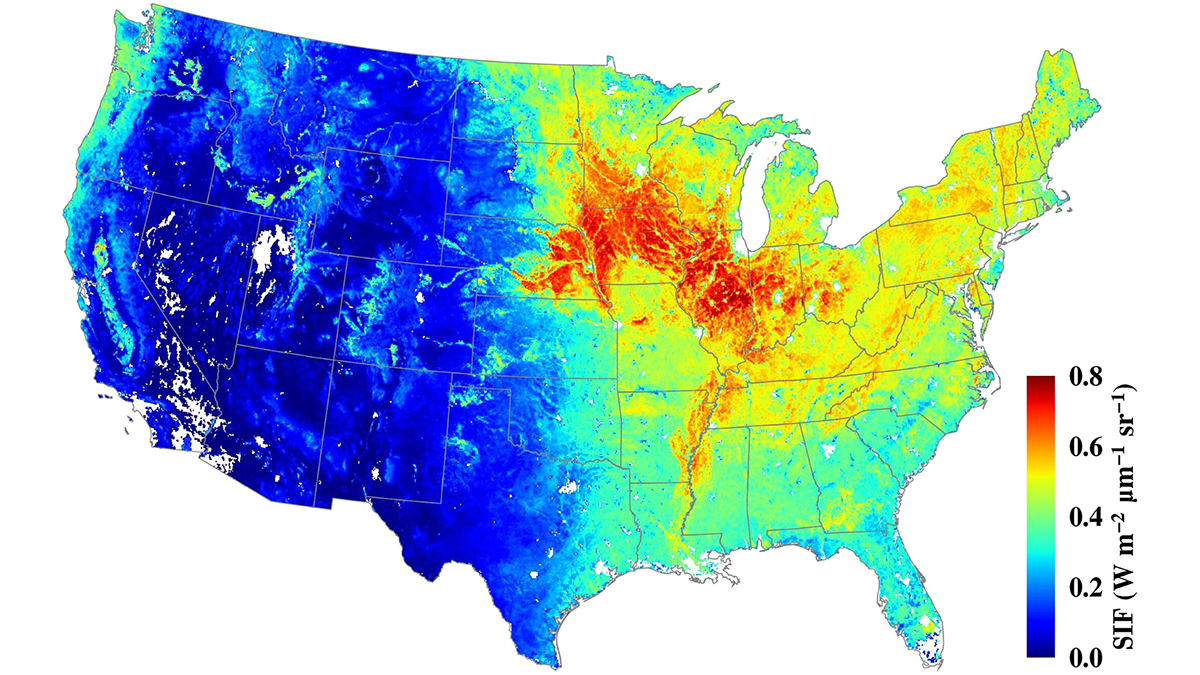Editors’ Highlights are summaries of recent papers by AGU’s journal editors.
Source: AGU Advances
NASA’s Orbiting Carbon Observatory-2 (OCO-2) was the first space-based sensor designed to study the Earth’s global carbon cycle and retrieves precise and accurate measurements of column CO2 from which fluxes of carbon over land and ocean may be inferred. The spectroscopic measurements, calibrated against an in-situ network, sample the atmosphere so that regional-to-continental fluxes can be quantified.
Svoboda et al. [2025] point out the enormous societal value of the OCO-2 observations from these satellites that in the normal course of events could continue providing gold-standard data for another decade.
Over its decade-plus in operation, OCO-2 has unraveled long-standing mysteries (Liu et al., 2017) and quantified massive events like the Australian fires in 2019-2020 (Byrne et al., 2021). Its most unexpected result was not from the CO2 retrieval, but rather from a serendipitous by-product! By virtue of its spectral resolution, OCO-2 ‘sees’ the faint glow, invisible to the naked eye, plants produce as chlorophyl molecules absorb photons. This glow, quantified, has turned about to be an extraordinary tool for studying plants and has proved to be amongst the most sensitive early warning signs of plant stress. It is well on its way to being a crucial way of measuring growth and anticipating stress in forest and agricultural landscapes, yet the mission is proposed for early termination.
Citation: Svoboda, M., Kira, O., Sun, Y., Smith, W. K., Magney, T., Wood, J. D., & Parazoo, N. C. (2025). Monitoring the pulse of America’s natural resources from the Orbiting Carbon Observatory missions. AGU Advances, 6, e2025AV002063. https://doi.org/10.1029/2025AV002063
—David Schimel, Editor, AGU Advances

